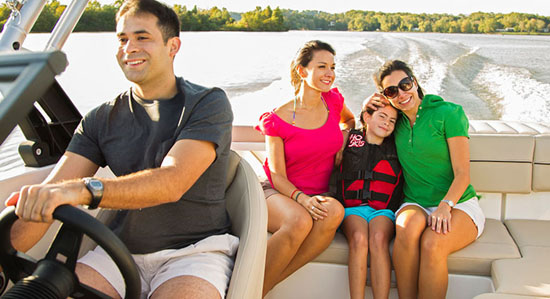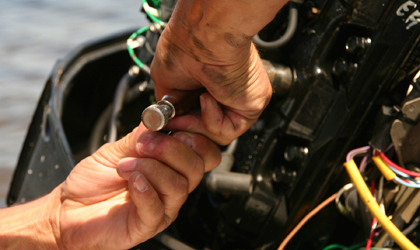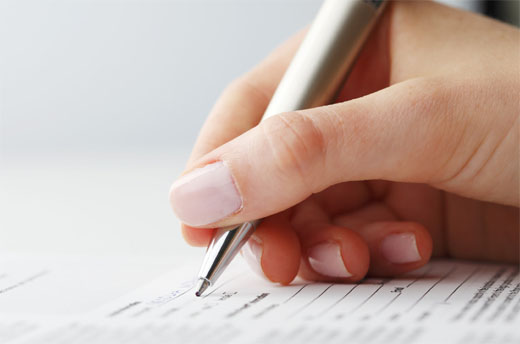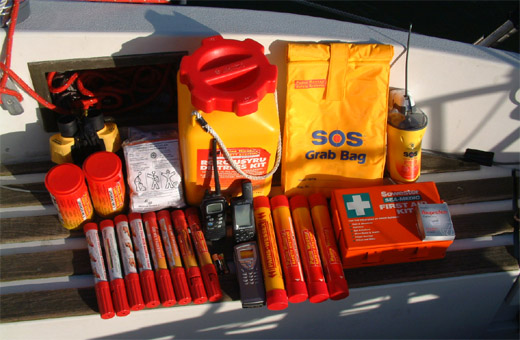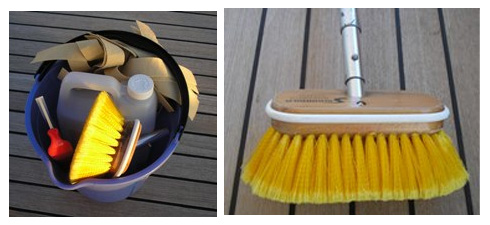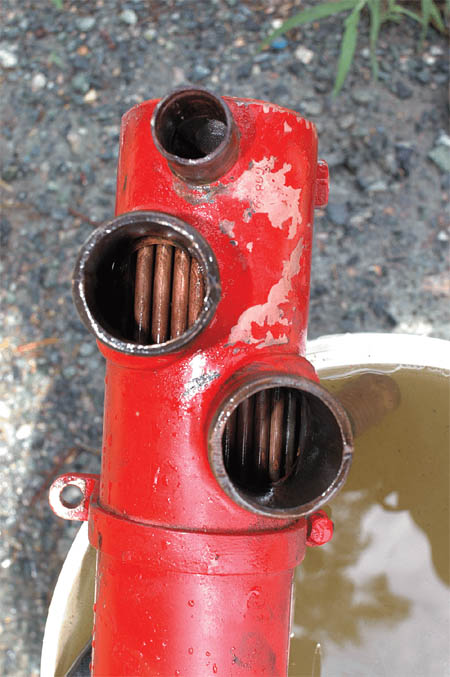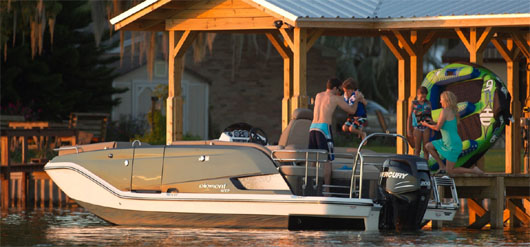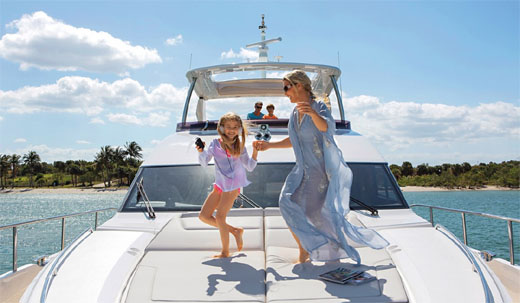Anyone who thinks
about investing in a boat bigger than a kayak should get out a calculator, take
a deep breath, and tally up honest estimates of the recurring costs of
registration, dockage, hauling and launching, winter storage, insurance, and
maintenance. But that last item—maintenance—is a tricky one to figure, because
it’s not a fixed amount determined by someone else; it will vary season to
season and year to year, and it will depend very much on how willing and able
you’ll be to work on your new investment.

Maintenance, of
course, means not only cleaning things, lubricating things, and replacing parts
on things that aren’t broken, but fixing things that are. And any boat owner
who’s been in the game for more than a few months will tell you there’s a lot
of it. There’s a strong argument (and I say it’s strong because I made it) that
the sense of accomplishment and satisfaction in boat ownership is enhanced by a
willingness to Embrace the Hacksaw.
But there’s a
counter argument that says, “I’m buying this boat to relax on, and I have no
intention of spending every weekend busting my transom to keep it the way I
want it. I’m planning to pay the pros to do that for me.”
Well, good on ya!
But let’s just make sure you know what you’re getting into, more or less, no matter
where you stand along the do-it-yourself spectrum.
Boatyard Labor Rates
Marine labor rates
vary widely around the country and the world, as does the quality of work
involved, and it shouldn’t be surprising that you don’t always get what you pay
for. You might pay a skilled marine tradesman in the lower Chesapeake or the
western Gulf Coast half of what a tradesman or his yard would charge for the
same job on Nantucket, Eastern Long Island or San Diego, and you might get a
better result to boot. But no matter where you are, you won’t find marine labor
cheap. Expect a range of $70 to $140 per hour for skilled work (engine work,
topsides painting and varnishing, electrical, refrigeration, etc.), and $40 to
$80 or so for unskilled projects (pressure-washing, waxing, scraping, etc.). So
where you plan to keep your boat will make a big difference in total dollars
spent on maintenance, assuming you’re planning to pay someone else do so a
portion of it.

While boatyard job
estimates tend to be low, any good yard manager will make an honest attempt at
quoting you a ballpark figure for a job based on Time + Materials (with a shop
markup for materials) or, sometimes, with a fixed price per job, depending on
the project and the experience of the yard in handling that job. See the
project list on a 2015-2016 winter storage contract from a boatyard in Glen Cove,
NY and the labor rates at a yard at the other end of Long Island for examples
of chores and expenses.
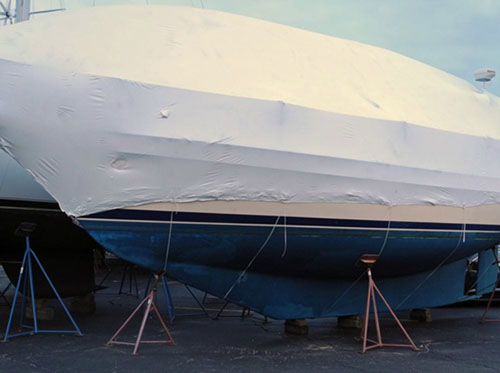
A yard foreman
who’s been in the business for 20 years will (or should) have a good idea of
how much you’ll pay to have your topsides cleaned, compounded and waxed. That
said, boats are complex objects, and even the pros are not immune to occasional
task/time-warps that can turn a two-minute project into an afternoon of
high-volume cussing. And that time will have to be paid for. For more on this
phenomenon, see Lenny Rudow’s Project: Reality.
BOAT TYPE
It’s obvious that
the size of a boat has a bearing on maintenance: The bigger it is, the more
expensive. But type matters, too, and so do layers of complexity in terms of
systems and surface areas. A 30-foot wooden sailboat with a full keel and
auxiliary diesel engine is going to cost more in the long run to maintain than
a 30-foot center-console with twin or even triple outboards (although it will
probably cost far less initially). The sailboat owner will have spars, rigging,
and sails to contend with; an auxiliary engine and running gear; topsides,
deck, and bottom that will need regular painting (a full-keel boat takes a lot
of bottom paint); plus freshwater, electrical, and sanitation systems to
maintain. The expensive center-console, on the other hand, will need to be
cleaned and waxed. If it lives in a slip at a dock it will need bottom paint
(but less than the sailboat); if it lives on a trailer or on a lift and just
splashes around for a few hours at a time, it may not need any bottom paint at
all. The outboards will need flushing and periodic maintenance, including oil
changes if they’re four-strokes. While routine maintenance on modern outboards
can be tackled by a moderately handy boatowner, many owners just trailer their
boats to their local dealers or service pros, or pay the pros to make house
calls for end-of-season servicing. If the boat has a plumbed-through head and
holding tank instead of a porta-potty, and a plumbed freshwater supply, those
things will take it back up the complexity scale.
So, no matter what
type of boat you’re shopping for—power or sail; bowrider, express cruiser or
center-console; outboard- or inboard-powered; trailer-borne or TraveLift-launched—bear
in mind that differences in configuration will make differences in your
maintenance budget.
A NOTE ON BUDGETING FOR MATERIALS
There are some
maintenance supplies sold at boating stores that can’t be found elsewhere, like
bottom paint, good-quality marine epoxy, marine-grade electrical connectors,
and engine zincs. On the other hand, boat stores make a ton of money with
stratospheric markups on items that can be found in regular hardware or
home-goods stores—things like mops and hose, paint brushes, high-quality
masking tapes, sandpaper, buckets, spray cleaners, and so on. If you’re a
hands-on person just getting into boats, you’ll save yourself thousands of
dollars in the long run by knowing what needs to be bought at a boat store and
what can be bought elsewhere.
Your Mission, Should You Choose to Accept It
Now we’re down to
the last element: you, and where you and other members of your family fit on
the DIY scale. Probably the easiest way to get down to the nitty gritty is to
present a sample list of maintenance chores that might be offered by a
full-service boatyard to their clients. Consider the type of boat you’re
interested in, research the labor rates at the boatyards in the area where
you’ll keep the boat, picture yourself doing these jobs, then picture trained
professionals doing them while you peel fifties off your bankroll.
Of course, those
are strictly recurring maintenance chores; they don’t include fix-it jobs, gear
replacements, new-equipment installations, or occasional make-overs like
topsides painting. (For more on what’s involved in all common DIY paint
projects—topsides, deck, and bottom—read How to Paint a Boat).
You’ll need to buy
some boat-specific maintenance items at your marine store. Other things like
sandpaper, buckets, and brushes will be much cheaper at your local hardware or
home-goods store.At the point where the idea of peeling off the next fifty is
just too painful, take a good look at the boat you're lusting after and brace
for a decision: You're either going to have to get up off your transom and
tackle more maintenance chores that you originally wanted to, or find a boat
that will be cheaper to maintain.
Happy budgeting, and happy boating.
About Navnit Marine Private Limited :
Navnit Marine provides Luxury Boat
Servicing in Mumbai India at its Marina at
Uran. You can avail yacht management services from
us.We offer owners a management support service capable of handling the full
spectrum of yacht operations. Our dedicated team has the vast knowledge and
experience to deliver solutions. We provide owners with reduced costs and
downtime with effective management and budget controls. Ultimately, giving
owners greater safety, enjoyment and peace of mind.
To Know More About Motor Boat Servicing in Mumbai
India , Contact Navnit Marine at 022 6677 6659 or Mail us at info@navnitmarine.com
We have various Yachts and Boats Like Princess
Yachts, Bayliner Boats, Meridian
Yachts and Many More.
Source - discoverboating.com


